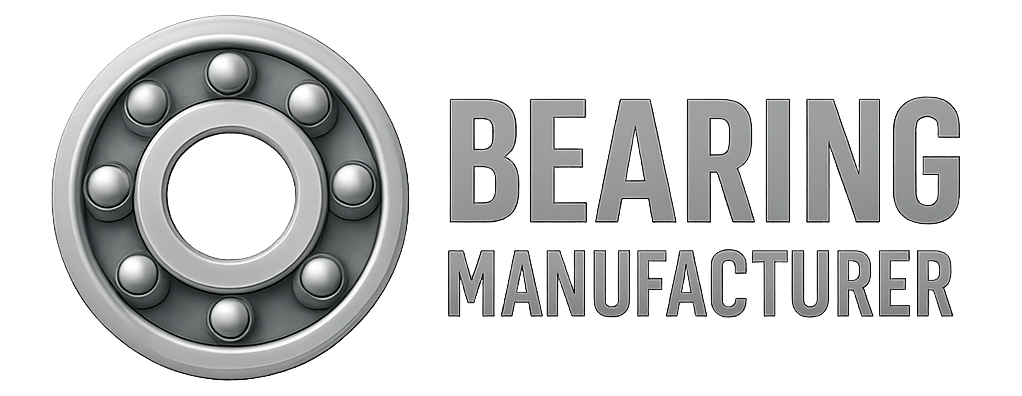Importance of Bearings in Mechanical Systems
Bearings play a critical role in enabling smooth, precise, and efficient motion in mechanical systems. By minimizing friction and wear, they improve energy efficiency, extend equipment life, and reduce noise and vibration. Understanding the types of bearings and their applications is essential for engineers, designers, and procurement professionals alike.
What Do Bearings Do?
Bearings are designed to:
- Support radial and/or axial loads
- Enable rotational or linear motion
- Minimize friction and wear
- Improve precision and stability
- Reduce energy consumption and noise
Where Are Bearings Used?
Bearings are essential in countless applications, including:
- Automotive & Transportation: wheels, engines, transmissions
- Aerospace: turbines, actuators, control systems
- Industrial Machinery: gearboxes, conveyors, pumps
- Consumer Products: appliances, bicycles, power tools
Common Bearing Components
Most bearings consist of:
- Inner and Outer Rings: Guide the rolling elements
- Rolling Elements: Balls or rollers that carry the load
- Cage/Retainer: Maintains even spacing between elements
- Seals/Shields: Protect against contamination
🏁 Ball Bearings: Versatile and Cost-Effective
Ball bearings use spherical rolling elements to handle radial and limited axial loads. They are known for:
- Compact design
- High-speed capability
- Low maintenance needs
Limitations: Lower load capacity than rollers, sensitive to misalignment and contamination.
Applications: Electric motors, automotive hubs, household appliances, aerospace systems.
Types of Ball Bearings
| Type | Key Features | Best For |
|---|---|---|
| Miniature Bearings | High precision, low noise, compact size | Electric motors, skateboards |
| Thin Section Bearings | Lightweight, low torque | Aerospace, robotics |
| Flanged Bearings | Easy mounting with integrated flange | Limited-space housings |
| Self-Aligning Bearings | Adjust to misalignment | Shaft deflection conditions |
| Angular Contact Bearings | Handles combined loads | High-speed machinery |
| Deep Groove Bearings | High radial & axial capacity | General-purpose use |
| Thrust Ball Bearings | Supports axial loads | Low-speed rotary applications |
| Ceramic Ball Bearings | Heat/corrosion resistant | High-speed, harsh environments |
🧱 Roller Bearings: High Load Capacity and Rigidity
Roller bearings use cylindrical or tapered rolling elements to handle heavier loads with lower deformation.
Advantages: High radial capacity, robustness, better performance under shock loads.
Limitations: Bulkier than ball bearings, more sensitive to misalignment and noise.
Common Roller Bearing Types
| Type | Function | Typical Application |
|---|---|---|
| Tapered Roller Bearings | Combined radial & axial load | Automotive wheel hubs |
| Cylindrical Roller Bearings | High radial load, low friction | Gearboxes, motors |
| Spherical Roller Bearings | Self-aligning, high load | Mining, heavy industry |
| Needle Roller Bearings | Slim profile, high capacity | Gear trains, transmissions |
| Spherical Thrust Bearings | High axial load & misalignment | Vertical shafts, cranes |
| Cross Roller Bearings | High rigidity & precision | Robotics, rotary tables |
🔄 Slewing Ring Bearings: Rotational Precision for Heavy Loads
Slewing bearings are large-diameter bearings designed for slow-speed rotational movement under heavy combined loads.
Benefits:
- Handles large axial, radial, and moment loads
- Integrated gears for drive systems
- Customizable designs
Applications: Construction machinery, wind turbines, satellite systems, robotics.
Slewing Bearing Types:
- Ball Slewing Bearings
- Roller Slewing Bearings
- Combination Slewing Bearings
- Thrust Ball Slewing Rings
- Wire Race Bearings
🛞 Cam Followers: Track Rollers for Guided Motion
Cam followers, also known as track followers, are bearings designed to follow cam profiles or tracks in automated motion systems.
| Type | Features |
|---|---|
| Stud-Type | Stud-mounted, compact |
| Yoke-Type | Shaft-mounted, handles higher loads |
Applications: Packaging, material handling, automation.
⚙️ Plain Bearings: Simple, Durable, and Lubricated
Plain bearings use sliding motion instead of rolling elements. They’re often self-lubricating and handle shock loads well.
| Type | Best For |
|---|---|
| Sleeve Bearings | Compact, low-speed applications |
| Spherical Bearings | Oscillating or angular motion |
Pros: Simple, cost-effective
Cons: Higher friction, more wear
➡️ Linear Bearings: Precision for Linear Motion
Linear bearings guide straight-line movement with high accuracy and low resistance.
| Type | Features |
|---|---|
| Linear Ball Bearings | High precision, low friction |
| Linear Sleeve Bearings | Low noise, simple design |
| Mounted Linear Bearings | Easy installation, ready-to-use units |
Applications: CNC machines, 3D printers, medical equipment
🏗️ Mounted Bearings: Pre-Assembled for Easy Installation
Mounted bearings are ready-to-mount units that combine housing and bearing, simplifying replacement and maintenance.
| Type | Use Case |
|---|---|
| Pillow Block Bearings | Floor-mounted shafts |
| Flange Bearings | Wall-mounted shafts |
| Take-Up Bearings | Tension adjustment |
| Hanger Bearings | Overhead shaft support |
| Cartridge Bearings | Compact, replaceable units |
🔧 Bearing Selection & Maintenance Best Practices
How to Choose the Right Bearing:
- Load type and magnitude (radial/axial/combined)
- Speed and precision requirements
- Operating temperature and environment
- Alignment tolerance
- Material and lubrication needs
- Mounting space and installation conditions
- Cost vs. performance tradeoff
Maintenance Tips:
- Regular lubrication
- Clean operating environment
- Proper alignment and load management
- Routine inspection and replacement
- Follow manufacturer’s guidelines
🧾 Conclusion
Bearings are foundational to the function of modern machines, from industrial motors to medical robots. Choosing the right bearing type based on your application’s load, speed, and environment is essential for reliability and longevity. For high-value decisions, consult an experienced supplier or engineer to match specifications to the best bearing solution.
